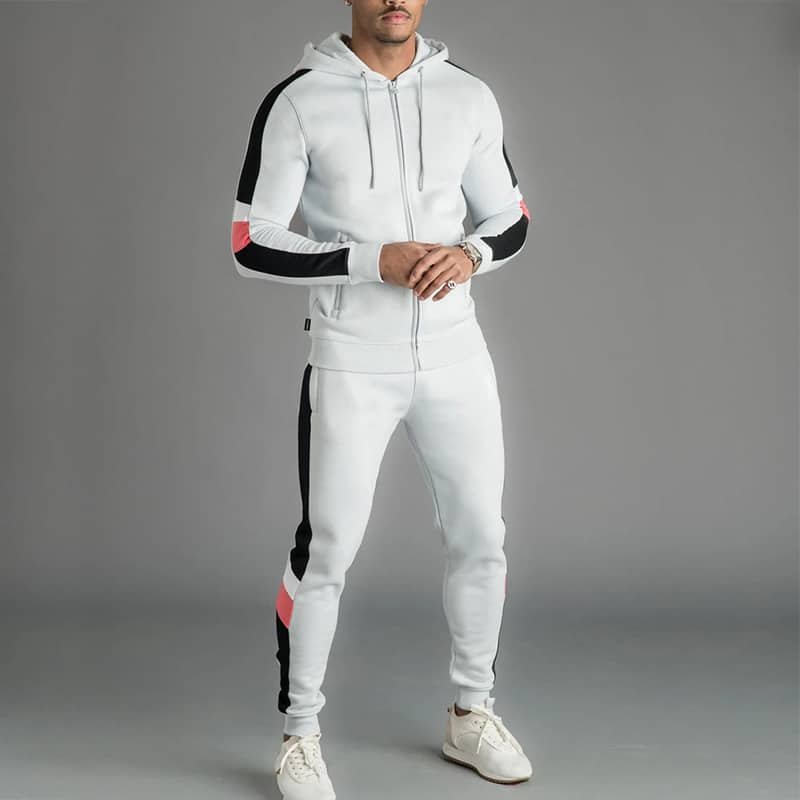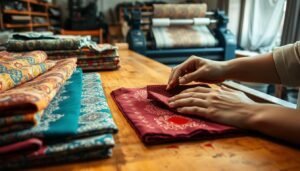Sportswear is not just about fashion; it’s about function, comfort, and enhancing performance. The choice of fabric in sportswear is critical as it impacts the wearer’s comfort, performance, and overall experience during physical activities. This article delves into the world of fabrics suitable for sportswear, exploring their unique properties and how they contribute to athletic performance.

Breathability and Moisture Management in Sportswear Fabrics
Breathability is a key feature in sportswear fabrics. Fabrics that allow air to circulate and moisture to evaporate quickly keep the body cool and dry, which is essential during intense physical activity.
Polyester: The All-Rounder in Athletic Wear
Polyester stands out as a popular choice for sportswear. Its quick-drying properties and durability make it ideal for a wide range of athletic activities. Unlike natural fibers, polyester does not absorb sweat but allows it to evaporate quickly, keeping the athlete dry and comfortable.
Nylon: The Durable and Flexible Choice
Nylon is renowned for its exceptional strength and elasticity. It’s a go-to fabric for sportswear that requires a high degree of flexibility, such as yoga pants and compression wear. Additionally, its quick-drying capabilities make it a practical choice for swimwear and outdoor sports apparel.
Spandex: For Stretch and Comfort
Spandex, known for its exceptional stretchability, is often blended with other fabrics to add elasticity to sportswear. This elasticity ensures a snug fit and freedom of movement, making it perfect for sports that require a wide range of motion.
Temperature Regulation and Comfort
The ability to regulate temperature is a crucial aspect of sportswear fabric. Fabrics that maintain a comfortable body temperature, regardless of the external environment, enhance performance and endurance.
Merino Wool: The Natural Temperature Regulator
Merino wool is a natural fiber that excels in temperature regulation. It keeps the body warm in cold conditions and cool in hot conditions. Its natural moisture-wicking properties also make it a great choice for outdoor sports in varying climates.
Bamboo: The Eco-Friendly Option
Bamboo fabric is gaining popularity in the sportswear industry for its eco-friendly properties. It is naturally antibacterial, moisture-wicking, and offers UV protection, making it suitable for outdoor sports.
Sustainable and Eco-Friendly Sportswear Fabrics
Sustainability in sportswear is becoming increasingly important. Eco-friendly fabrics not only benefit the environment but often offer unique advantages for athletes as well.
Recycled Polyester: Combining Sustainability with Performance
Recycled polyester, made from post-consumer plastic bottles, offers the same benefits as virgin polyester but with a smaller environmental footprint. It’s a sustainable choice for environmentally conscious athletes.
Organic Cotton: The Comfortable and Natural Choice
Organic cotton is grown without harmful chemicals, making it safer for the environment and the wearer. While not as moisture-wicking as synthetic fibers, it’s a good choice for low-intensity sports where comfort is a priority.
Innovative Technologies in Sportswear Fabrics
Advancements in textile technology have led to the development of innovative sportswear fabrics designed to enhance athletic performance.
Water-Resistant and Windproof Fabrics
For outdoor sports, fabrics that are water-resistant and windproof while still being breathable are essential. These materials protect against the elements without compromising on comfort and performance.
Compression Fabrics for Enhanced Performance
Compression fabrics are designed to improve blood circulation and muscle recovery. They are widely used in leggings, tops, and socks, offering support and reducing muscle fatigue during and after exercise.
Choosing the Right Fabric for Different Sports
The choice of fabric can vary greatly depending on the sport. Understanding the specific needs of each sport is key to selecting the right material.
Fabrics for Running and Cardiovascular Activities
For high-intensity cardiovascular activities like running, lightweight, breathable, and moisture-wicking fabrics are ideal. They keep the body dry and prevent overheating.
Fabrics for Yoga and Stretch-Based Sports
In yoga or Pilates, flexibility and comfort are paramount. Stretchable fabrics like spandex blends offer the necessary freedom of movement while maintaining their shape.
Outdoor Sports: Fabrics for All-Weather Protection
For outdoor sports like hiking and skiing, fabrics that offer protection from the elements while allowing the skin to breathe are essential. Layering sportswear with different fabric properties can also enhance comfort and adaptability to changing weather conditions







